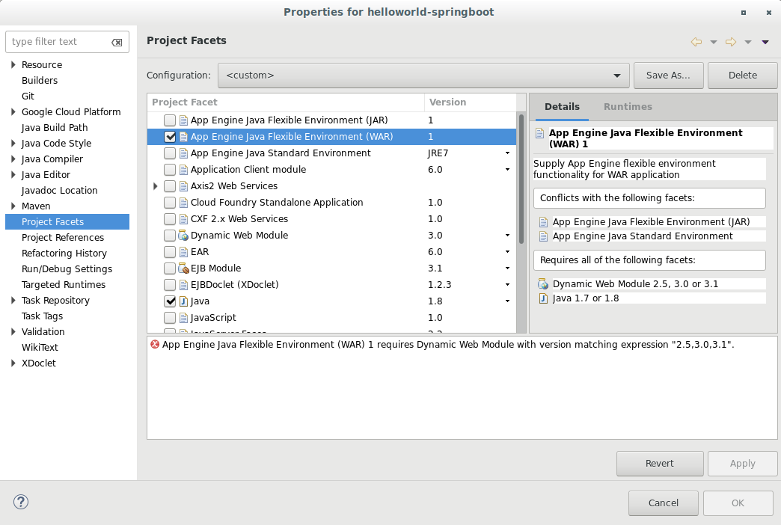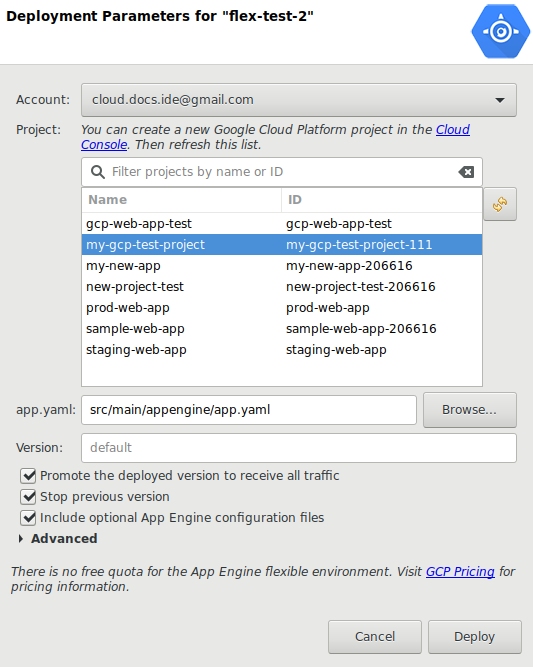This page describes how to deploy your project to the App Engine flexible environment Jetty runtime.
Before You Begin
You need a Google Cloud project with an App Engine application to deploy to. If you don't already have one, use the Google Cloud console to set up your Google Cloud project:
- Select or create a new Google Cloud project.
Sign in to a Google account that is used to deploy your project to App Engine.
Run the following command
gcloud auth application-default loginYour system browser opens outside of the CLI and asks for the permissions it needs to manage your App Engine applications:

Click Allow and close the window. Eclipse is now signed into your account.
Deploy a Project
To deploy your project to the flexible environment:
In the Project Explorer, right click the project you want to deploy.
Open the context menu, and select Properties.
In the sidebar, select Project Facets.
- If your project is not faceted, click the Convert to faceted form... link to display the available facets.
Select the App Engine Java Flexible Environment (WAR) facet checkbox.

Click OK.
In the Package Explorer or Project Explorer, select the project you want to deploy.
Click the Google Cloud toolbar button
 .
.Select Deploy to App Engine Flexible in the drop-down menu.
A dialog pops up.

Select the Account you want to deploy with, or add a new account.
In the Project field, select the Google Cloud project you want to deploy to.
In the app.yaml field, click Browse to select your
app.yamlfile if it is not in the defaultsrc/main/appengine/directory.If you want to keep the current version running and manually promote the new version later using gcloud or the Google Cloud console, clear the Promote the deployed version to receive all traffic checkbox.
If you don't want to stop the previous version, clear the Stop previous version checkbox.
Click Deploy.
A background job launches to deploy the project to App Engine. The output of the job is visible in the Eclipse Console view.
What's next
- Explore the plugin code or report issues on GitHub, or ask a question on Stack Overflow.
